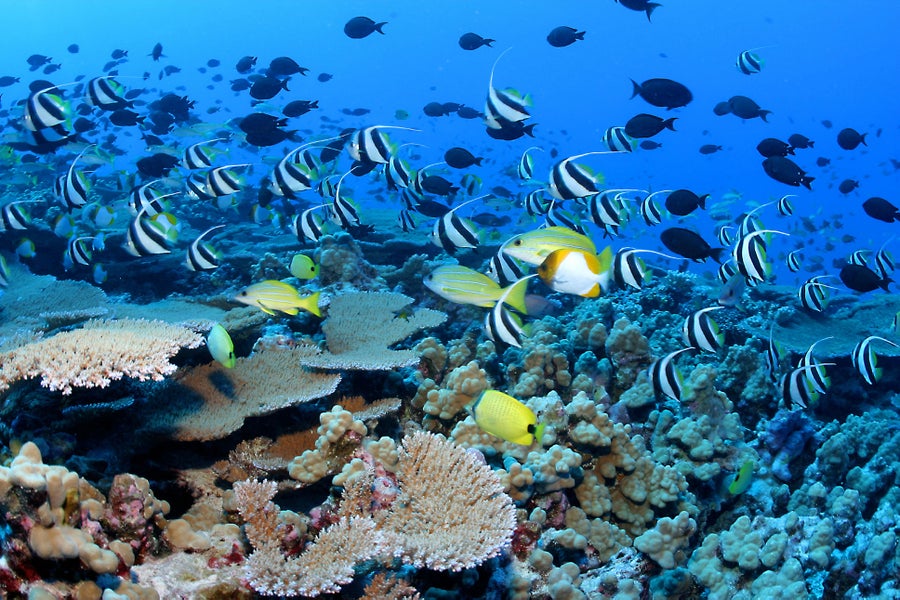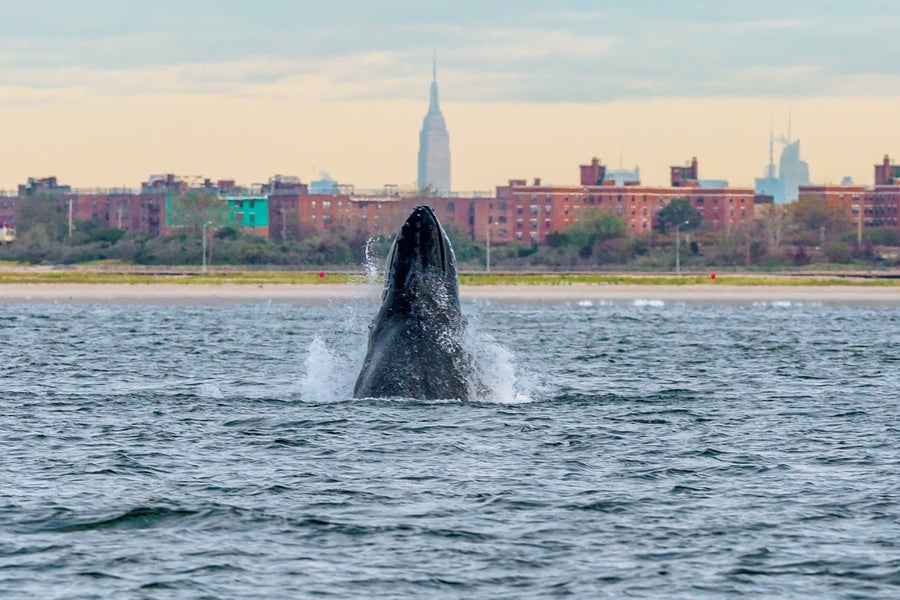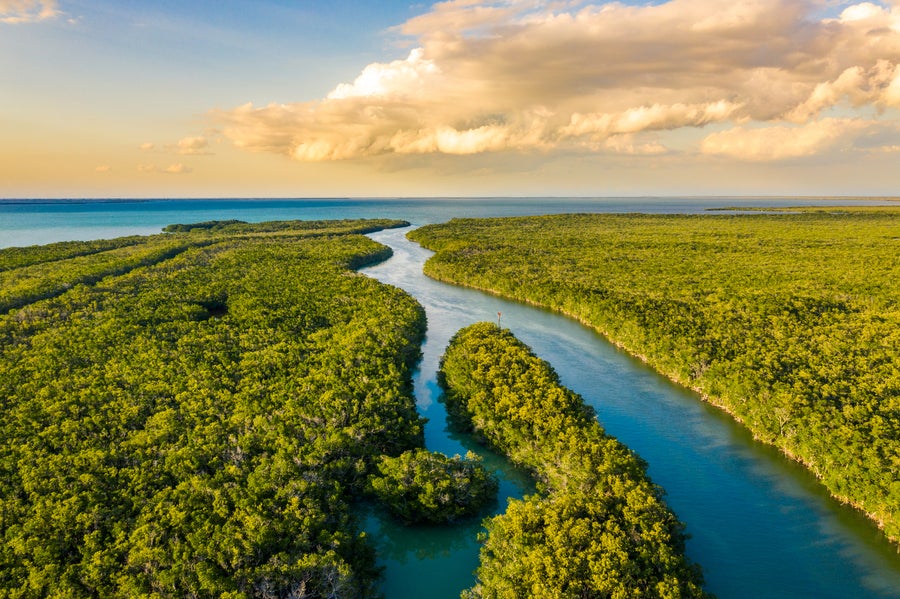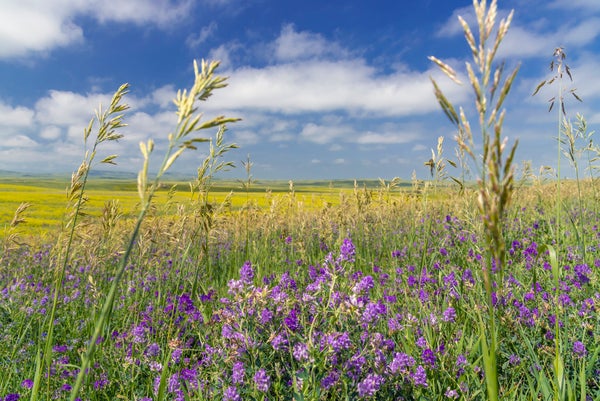The U.S. covers a vast array of ecosystems, from Alaska’s Arctic tundra to Florida’s tropical swamps, with prairies, snow-capped peaks and deserts in between. Like the rest of the planet, humans are putting those ecosystems under enormous strain as we convert land to agriculture and urban development, release myriad pollutants and burn fossil fuels that spew heat-trapping greenhouse gases. But fast action can stem the resulting loss of biodiversity and give animals, plants and the ecosystems they make up the best possible chance to adapt.
One action getting headlines is a science-backed proposal to set aside at least 30 percent of the planet’s surface for conservation by 2030 known as 30x30. The Biden administration has endorsed this 30 percent goal for the U.S. and made it a principle of its Conserving and Restoring America the Beautiful plan. The administration recently announced that the U.S. had formally joined the High Ambition Coalition (HAC) for Nature and People, a group of more than 90 countries encouraging the adoption of the 30x30 target.
But how could conserving 30 percent of the U.S. be put into practice? Scientific American spoke with several conservation experts about the places we need to protect, what that means and how we might go about doing it.
On supporting science journalism
If you're enjoying this article, consider supporting our award-winning journalism by subscribing. By purchasing a subscription you are helping to ensure the future of impactful stories about the discoveries and ideas shaping our world today.
How do we figure out which areas to protect?
A key part of the 30x30 goal is to include a broad array of ecosystems and habitats. “It’s not about just protecting the Arctic. It’s really about protecting ecosystems that represent your region,” says Helen O’Shea, a renewable energy director at the Natural Resources Defense Council (NRDC).“So it might be grasslands, it might be creeks, it might be vernal pools in California. It’s going to be different everywhere.”

Reef fish swim in the waters of Papahānaumokuākea Marine National Monument, the largest marine protected area in the world. Credit: NatPar Collection/Alamy Stock Photo
To make sure conservation plans capture disparate ecosystems, lots of data must be gathered to reveal which tracts are already being protected and where the gaps are. To that end, the Biden administration is working on the American Conservation and Stewardship Atlas, which will be “the first comprehensive nationwide snapshot of what lands and waters in America are currently protected,” O’Shea says. An initial version of the atlas is scheduled for release by the end of the year.
Right now, experts say, the 30 percent of the U.S. could come in part from the roughly 12 percent of the country’s land and the 26 percent of its marine territory that have some level of protection. Some of this is off-limits to all extractive industry, but there are national forests and other areas that are largely left wild where commercial activities such as logging and drilling are allowed. Also included might be lands controlled by the Department of Defense that are not under any formal protection but that are largely left in a natural state, says Bruce Stein, chief scientist of the National Wildlife Federation.
Along the way, O’Shea says, it will be crucial to make sure key spots for biodiversity are highlighted and that conservation can be done in an equitable way, involving local communities.

Humpback whale spy-hops off Rockaway Peninsula in New York City in 2013. Credit: Artie Raslich/Getty Images
What places or ecosystems are we already not conserving well enough?
On land, wetlands and prairies are in dire need of more protection. About 60 percent of the Great Plains has been degraded used for intensive agriculture, and about half of the country’s original wetlands have disappeared. In these ecosystems, not only protection but restoration will be crucial. “We need to recognize that some habitat types are so imperiled that they can only be brought back through restoration,” O’Shea says.
Though a higher percentage of U.S. ocean area is protected, compared with land, most of it is far out in the central Pacific ocean—in particular, in Papahānaumokuākea Marine National Monument. Many more types of ocean ecosystem protections are needed around a much broader swath of the country’s seas, says Lisa Suatoni, deputy director of NRDC’s oceans program. “In some ways, ocean conservation and ocean protection is behind terrestrial protection just because the ocean is ‘out of sight, out of mind,’” she says. “We’re not able to see the spectacular canyons and mountains under the water like we do on land.”
One example is the New York Bight, coastal waters that extend southwesterly from the tip of New York State’s Long Island to Cape May at the bottom of New Jersey. Several whale species have made a comeback there in recent years. Suatoni highlights key fish spawning grounds and the many types of coastal ecosystems, such as mangroves, that benefit not only animals but the communities near them—for example, by protecting against storm surges. Such ecosystems also help sequester carbon, mitigating climate change.
Suatoni says that even within existing marine reserves, protection could be strengthened to curtail commercial fishing and other extractive activities. “There are some places on earth so special that it’s worth not pursuing industrial activities, allowing nature to thrive,” she says.

One and a half million acres of marsh, mangroves and pine flatlands of Everglades National Park are home to several endangered animals, including the Florida panther and the West Indian manatee. Credit: SimonSkafar/Getty Images
Does 30x30 mean more national parks?
National parks are an important part of the 30x30 plan, but “it can’t just be pockets of protected areas here and there,” O’Shea says. To safeguard biodiversity, animals need to be able to move between highly protected spots such as national parks to help ensure genetic diversity in populations. “Biodiversity is also genetic diversity, and genetic diversity is the fuel of adaptation,” which is key to surviving and thriving in a changing climate, Suatoni says.
That connectivity can take several forms, and they do not need to have the same level of protection, Stein says. An example is formal wildlife corridors, such as one breaking ground this week in Los Angeles County. It will allow the mountain lions of the Santa Monica Mountains, which have been cut off genetically from other populations, to mix.
Landscape under 30x30 can also include conservation easements on private property, such as when ranchers, farmers or other landowners set aside an area so it can develop naturally. “It’s about working with local communities, tribes, farmers and ranchers to see if some areas can be set aside or can be managed differently,” says Susan Lieberman, vice president of international policy at the Wildlife Conservation Society.
Providing corridors for species will take funding and policy support at the national and state level, which O’Shea hopes to see more of as part of the Biden administration’s 30x30 efforts. The National Wildlife Federation has been working to pass a bill called the Recovering America’s Wildlife Act, which has bipartisan support and would provide money to state agencies and Native American tribes to actually implement plans to protect wildlife that have been sitting idle. “If you can keep wildlife from declining to the point where it needs the sort of emergency-room protections that the Endangered Species Act employs, then you can be more proactive and a lot less strict” in the protections you implement, Stein says.
A key consideration when setting aside land will also be equity. Some of the U.S.’s flagship national parks, such as Yellowstone, include land forcibly taken from Native American tribes. There are newer designations, such as Bears Ears National Monument, that were made in consultation with tribes and allow tribal access for traditional plant gathering and ceremonial purposes. “I think the equity piece is what has the potential to set this campaign apart from other conservation efforts,” O’Shea says. “I really think this is an opportunity to start to do conservation differently.”
